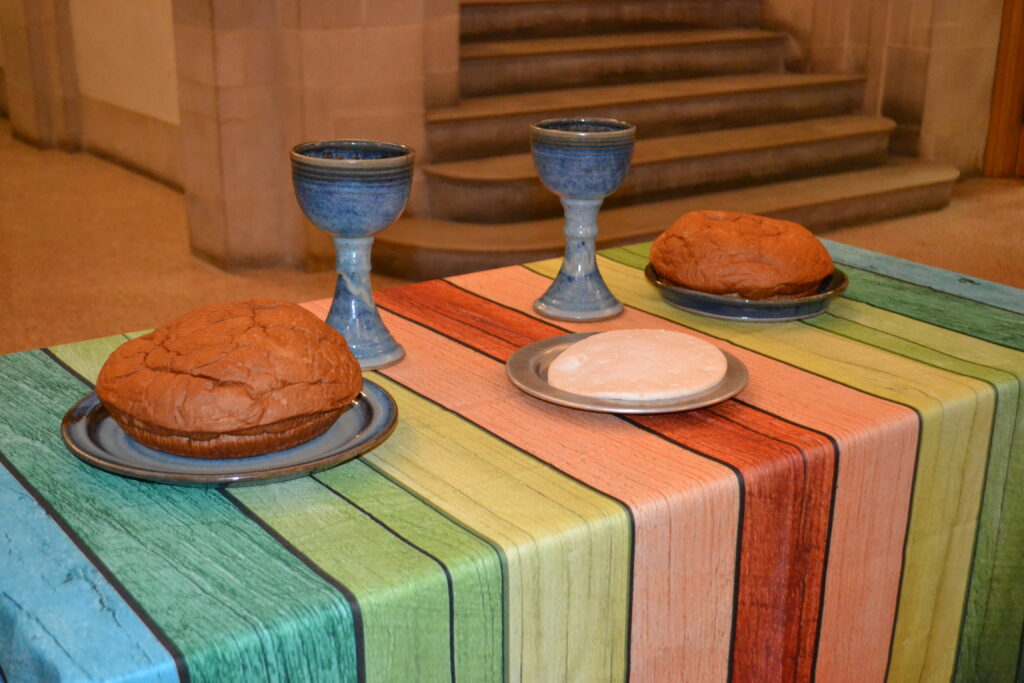On Slavery, Schisms and Sexuality: A Conversation with Dr. Barry E. Bryant
April 3, 2024

By Benjamin Perry
John Wesley’s beliefs about slavery left little room for equivocation: “Nothing is more certain in itself, and apparent to all,” he concluded in Thoughts on Slavery, “than that the infamous traffic for slaves directly infringes both divine and human law. Nature created man free; and grace invites him to assert his freedom.” The history of Methodism and abolition, however, is more complex, and exposes deep tension between the demands of conscience and desires to preserve the institutional church. As we approach a General Conference that promises to be deeply painful—furthering the schism already felt throughout the United Methodist Church and beyond—it’s worth returning to this story. The forces which shaped it have not disappeared, they have simply changed their form.
In revisiting that history I spoke with Dr. Barry E. Bryant, Associate Professor of United Methodist and Wesleyan Studies at Garrett-Evangelical, to guide me along that path toward the historic 1844 schism when the northern and southern church split over the institution of slavery. “The story of 1844 truly begins in the Christmas Conference of 1784,” Dr. Bryant explains, “When that conference met, they issued a proclamation that if you were a layperson, you couldn’t become a Methodist if you owned slaves, and if you were a Methodist pastor, you had to release your slaves.” This proclamation extended Wesley’s writings to their natural conclusion: If slavery was inherently sinful, liberating enslaved people was an essential act of repentance.
This moral clarity, however, soon became a point of contention within Methodism. “Plantation owners—the 19th century oligarchs of the day—were becoming more and more powerful,” Dr. Bryant explains, “Their money influenced the southern annual conferences and created an obvious regionalism where conferences held below the Mason Dixon line became known for their pro-slavery positions.” At the same time, abolitionist preachers in the north were becoming more strident in their condemnations, publishing tracts calling out the glaring contradictions between church principles and slaveholding in the southern states. Many bishops and other church leaders, however, saw these internal divisions as a greater threat than the evils of slavery itself.
None other than Francis Asbury himself became a staunch proponent of moderating the Methodist Church’s opposition to slavery out of desire to grow the southern church. “Between 1784 and 1816, you gradually see the Methodist Episcopal Church backing away from abolitionist demands,” Dr. Bryant says, “to where it was eventually said that Methodism was no longer a slavery condemning church, but a slavery accommodating church, a slavery permitting church.” While folks are quick to praise Asbury as the father of American Methodism, this aspect of his legacy often goes unmentioned. “When Wigger wrote the biography of Asbury, American Saint,” Dr. Bryant notes, “it glorifies someone who sacrificed Black lives and Black bodies on the altar of Church growth.” This prioritization of church growth over liberation continued after Asbury’s death: In an 1840 response to abolitionist writings by the New England Conference, Bishop Beverly Waugh instructed the writers to cease publishing, because their writing endangered church unity.
Rising tensions came to a head when James O. Andrew, a minister who enslaved people, was elected Bishop. “The 1844 conference was held in New York,” Dr. Bryant explains, “You could see the storm on the horizon. Some New England clergy brought up the fact that Bishop Andrew owned slaves and issued a cease-and-desist order that he stop exercising the office of bishop until he freed them.” Andrew and the southern conferences refused, and the Methodist church split across the Mason Dixon line. As we approach another contentious General Conference, Dr. Bryant notes that it’s illuminating to see how neatly the divide over LGBTQIA+ ordination conforms to divisions over slavery. “It is no accident that when you compare the map of slavery in the jurisdictional conferences,” he says, “if you lay that on top of all the conferences that won’t welcome LGBTQIA+ persons, they overlap.”
Returning to the history can also inform how we ought to respond in this moment, Dr. Bryant observes. “In the very first annual conference in 1744,” he says, “Wesley was asked, ‘To what extent do we obey the bishops?’ His answer was, ‘Only as far as your conscience will allow.’” As medical science affirms natural diversity in sexuality and gender—and broader culture shifts to celebrate queer people—folks who cling to harmful theologies offer the rest of us a choice: Will we exclude God’s children to preserve institutional unity or will we follow our conscience? And, as Dr. Bryant is quick to note, institutional viability and LGBTQIA+ inclusion are not actually at odds. “There’s a whole body of people who are not a part of any church, and we’re not going to reach those people by maintaining a 19th century racial or sexual ethic,” he says.
The throughline between racism and queerphobia is another reason we should revisit the history of Methodism and abolition as the General Conference approaches. “The issue that has shaped and influenced Methodist history, doctrine and polity more than anything else has been race,” Dr. Bryant says, “It became a dress rehearsal for how we would exclude other groups—whether they were women or LGBTQIA+ people.” And the history of abolitionist forces—from Black liberation movements to white abolitionists who resisted calls to unity over justice—should lend courage and clarity. As a minister put it more than a century after the 1844 schism: “It is always the right time to do the right thing.”

